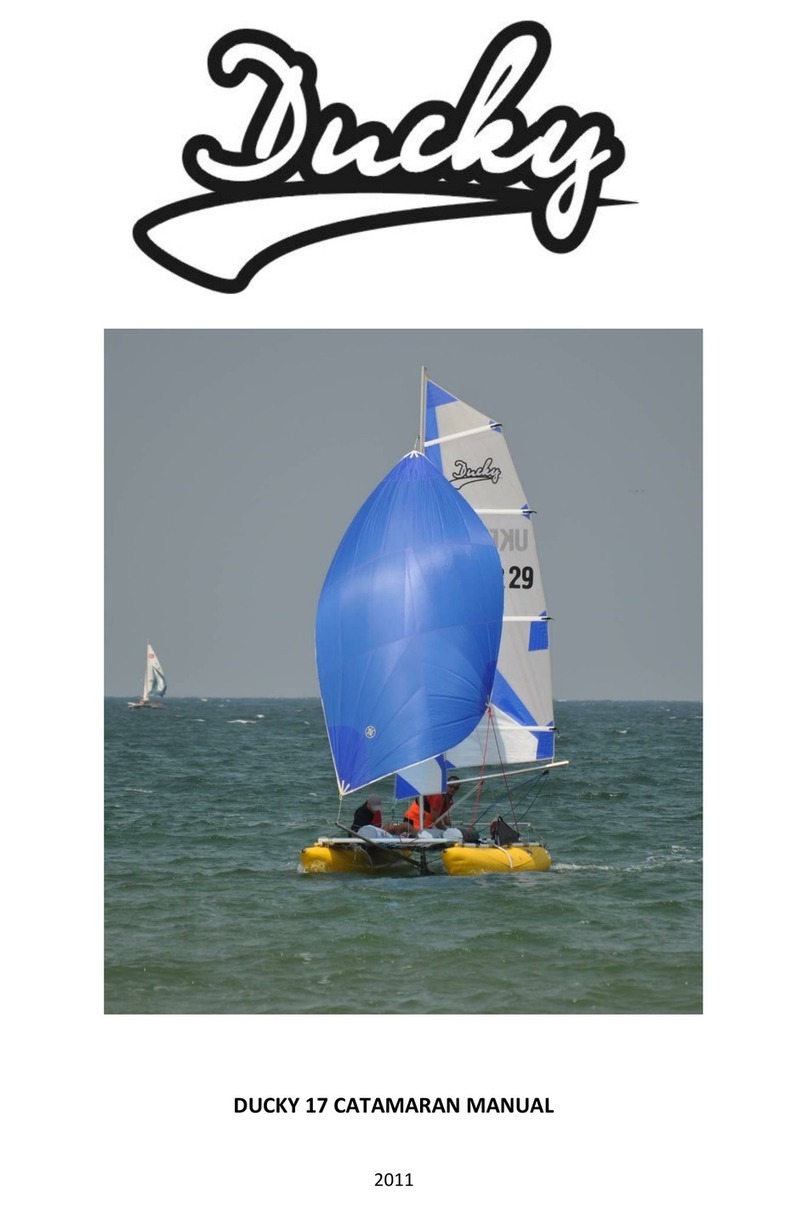CATAMARAN CONSTRUCTION
Floats provide the buoyancy of catamaran. They are made from PVC fabrics and have
impermeable partitions dividing every float into two compartments. Every compartment is
equipped with a valve for filling with air. The floats are attached to the bridge with loops.
Bridge is аload-bearing unit of catamaran and takes on the loading of rigging, crew, etc. It is
made up of two compound longitudinal beams –stringers, three transverse beams –bow
beam, under-mast beam, stern beam, and diagonal cable tension braces - lower bridle.
Stringer beams consist of two parts: bow (short) and stern (long).
Trampoline is made from PVC net and serves for crew accommodation. Trampoline’s sleeves
are put on the stern and stringer beams. Trampoline is tensioned by lacing to under-mast
beam.
Cargo net is made from a nylon ribbon and intended for placing of luggage and crew. Cargo
net is put on bow and stringer beams by sleeves and tensioned by lacing to the under-mast
beam.
Centerboard unit consists of the centerboard and the centerboard box. The centerboard is used to
reduce the drift of catamaran when sailing upwind. Rubber expander holds the centerboard in
operational (vertical) position. Expander absorbs the hitting of underwater obstacles, thus
allowing avoid the serious damage of the centerboard. In moorage (horizontal) position
centerboard is raised by halyard and held with clam cleat on the under-mast joint unit.
Rudder unit consists of the rudder blade and rudder box. Rudder is used to control the catamaran.
It is mounted in the rudder box, which is attached to the rudder joint unit. Rubber expander holds
the rudder blade in operational (vertical) position. Expander absorbs the hitting of underwater
obstacles, thus allowing avoid the serious damage of the rudder blade. In moorage (horizontal)
position rudder blade is raised by halyard and held with clam cleat on the rudder tiller.
Rigging consists of the mast and sails. The mast consists of four pieces which are interconnecting.
Standing rigging includes forestay and shrouds which hold the mast in position. Tensioning of
shrouds and forestay is done by forestay's lanyard.
Running rigging includes tackle to control sails: the main-sheet, the jib-sheet, and gennaker-
sheet.





























